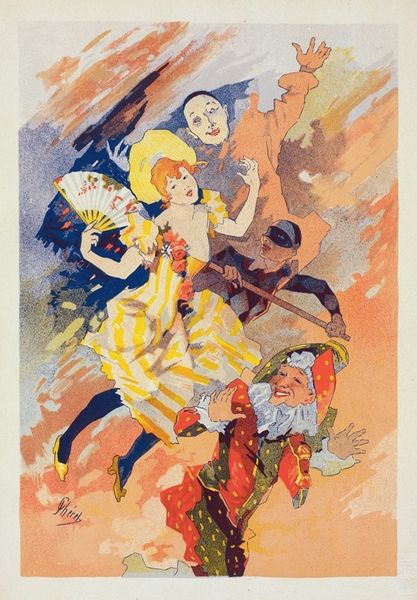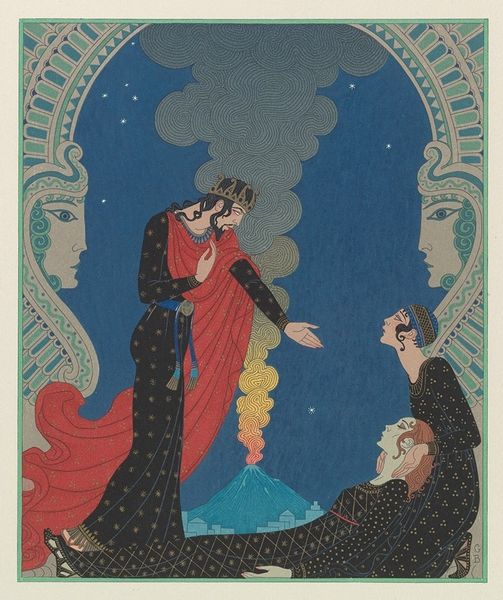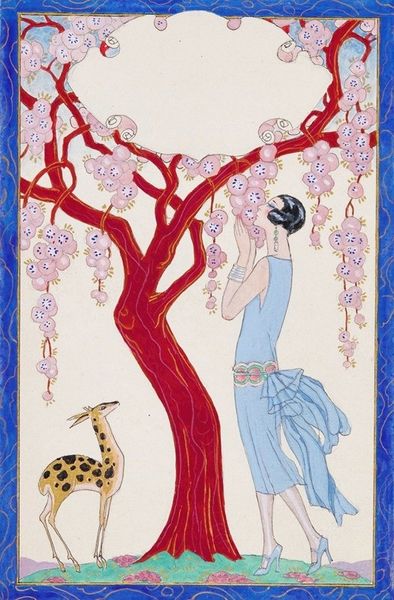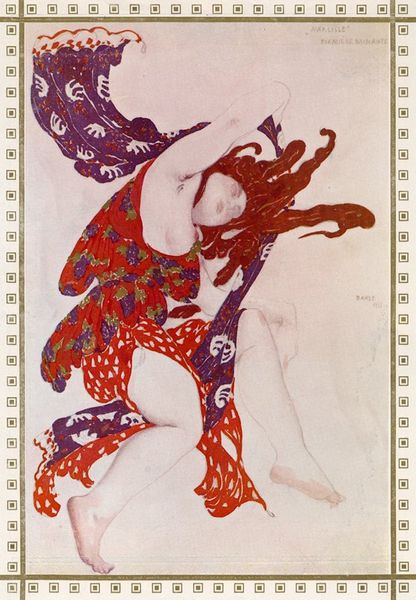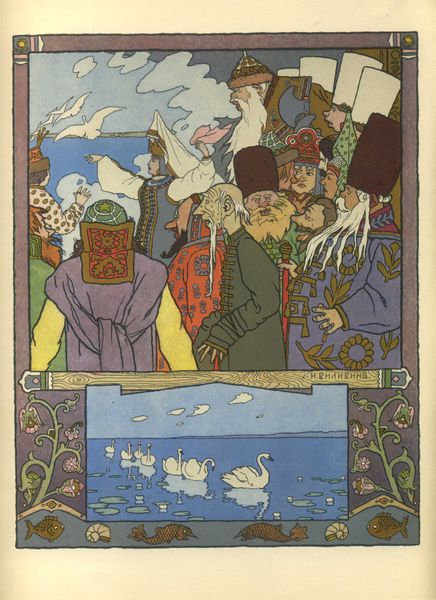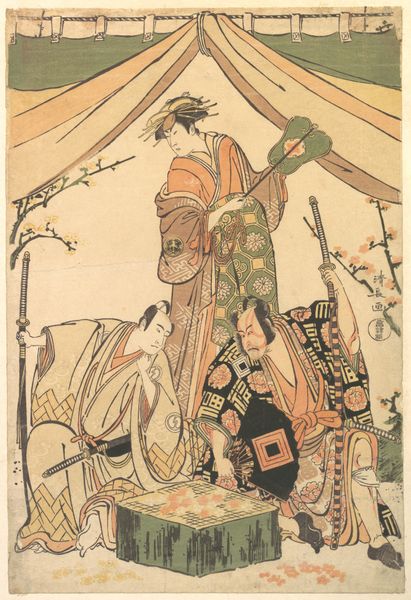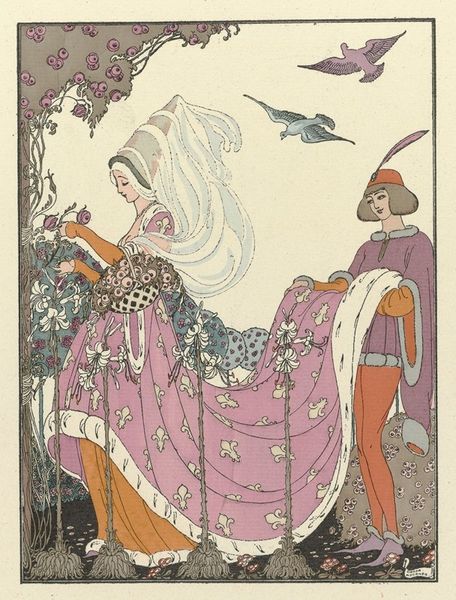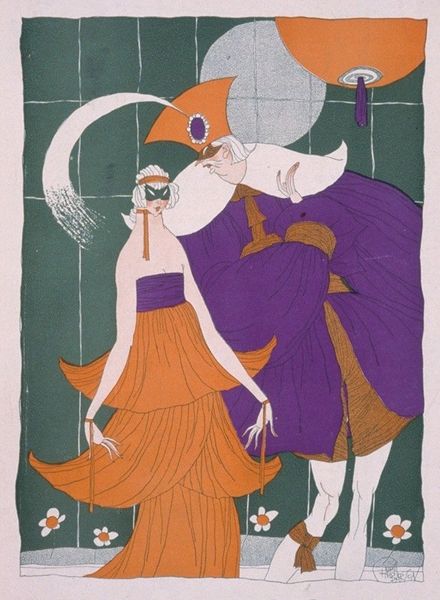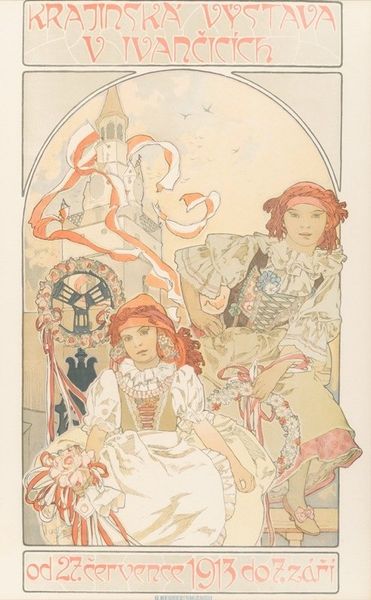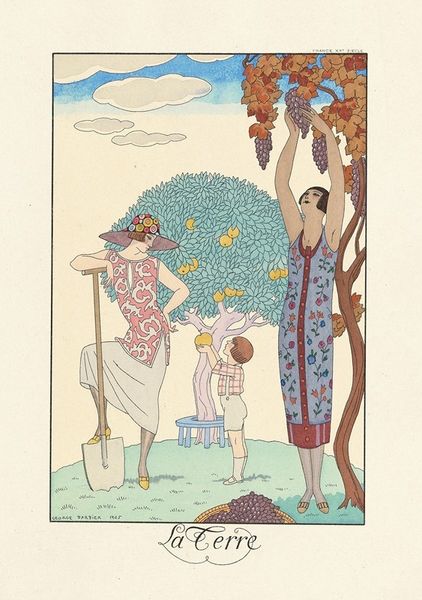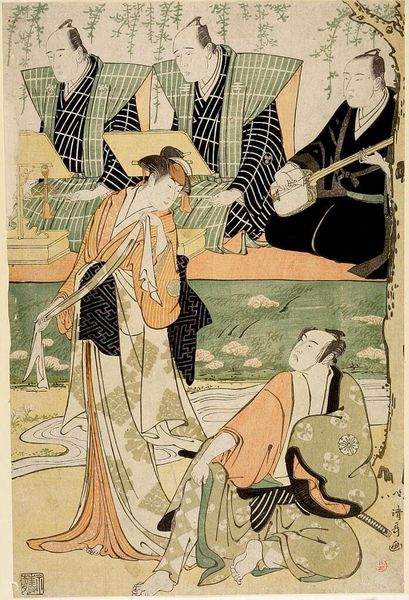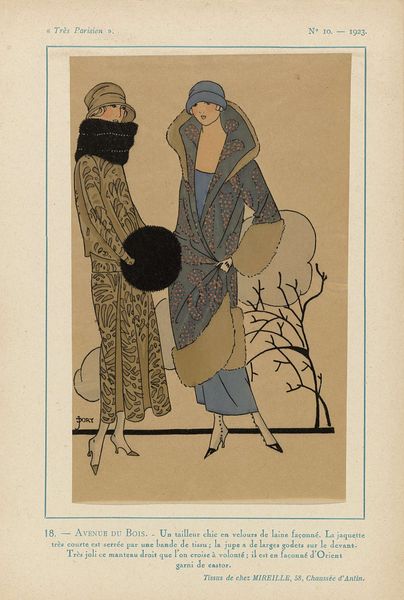
textile, watercolor
#
narrative-art
#
death
#
landscape
#
textile
#
fantasy-art
#
figuration
#
text
#
watercolor
#
naive art
#
symbolism
#
painting art
#
watercolour illustration
Copyright: Public domain
Curator: Look at this interesting work on textile and watercolor. It’s called "Love, Desire, and Death," and it's by George Barbier. It feels almost like a medieval tapestry in its design. Editor: My initial impression is one of bittersweet fantasy. The color palette is whimsical yet there is this definite dark figure playing music. It feels like an allegory, like something out of a fable. Curator: It is striking how Barbier merges stylistic elements, isn’t it? We can read medieval tapestries into the staging of the figures and the clear design-oriented intention in the execution, but these are characters firmly within the artist's time, referencing modern ideas about symbolism, performance, and fashion. Editor: Exactly. Take that jester, for example, complete with the skull face, standing in for death. It’s such a classic symbol—a *memento mori*, reminding us that even amidst love and desire, death is an inescapable presence. The two figures alongside Death form such an evocative sequence, perhaps about the ages of woman. The bird pair looks ominous. Curator: These recurring symbols can tell us something about what was at stake socially and culturally. With World War One still lingering in the very recent past, there was an acknowledgement of what can and cannot be maintained culturally, politically, and socially. To what extent are they a comfort, a warning, or a fantasy? These all coexist here. Editor: Definitely a potent concoction of yearning, premonition, and perhaps a touch of dark humor. And the inclusion of the unicorn… Such a fascinating, multifaceted creature, signifying purity, grace, and the unobtainable. Its downward gaze makes the scene all the more poignant. Curator: The politics of imagery! I agree. A very timely visual metaphor. And, given the role of artists such as Barbier at this time—often involved with the production of lavish fashion and theater magazines—these potent and highly symbolic elements, circulated widely, contributed to a rich symbolic landscape in which to situate oneself and interpret culture as a whole. Editor: Barbier has certainly given us plenty to think about. This piece serves as a gentle but persuasive reminder to reflect upon life’s beauties and vanities. Curator: And, more broadly, this type of image reminds us how art and artists responded in nuanced and imaginative ways to societal circumstances.
Comments
No comments
Be the first to comment and join the conversation on the ultimate creative platform.
